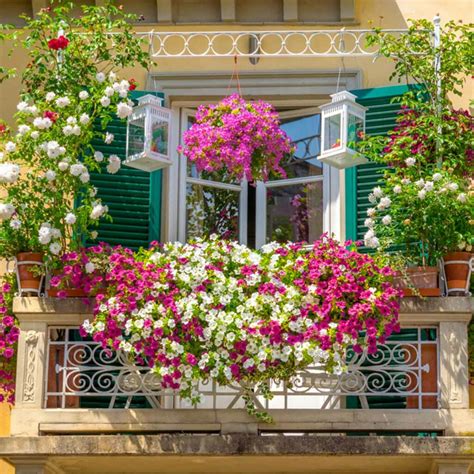Top Tips for Choosing the Best Flowers for Your Balcony Garden
Creating a stunning balcony garden involves more than just selecting random flowers. You need to consider factors like sunlight exposure, space, climate, and care requirements to pick the right flowers. The goal is to find the best flowers that will not only thrive on your balcony but also complement its design and aesthetics. In this comprehensive guide, we provide expert advice and practical tips on how to choose the best flowers for your balcony garden.
Key Concepts for Balcony Flower Selection
- Sunlight exposure: How much direct sunlight your balcony receives influences the type of flowers you can grow.
- Climate and weather: Different flowers thrive in specific climates and temperatures.
- Container size: Balconies limit space, so it’s essential to consider the type and size of pots or containers for your flowers.
- Maintenance needs: Some flowers require more water and care than others, so balance your choice with the time and resources available.
- Aesthetics: Consider how the flowers will look together and fit the overall design of your balcony space.
Historical Context of Balcony Gardens
Balcony gardens have been around since ancient times, with roots in the hanging gardens of Babylon. In modern cities, they provide a way for urban dwellers to connect with nature in confined spaces. From the rise of flower boxes in Victorian England to contemporary apartment gardens, the choice of flowers has always reflected cultural trends and individual tastes.
Current State Analysis
Today, urban gardening is more popular than ever due to limited outdoor spaces. Many urbanites are turning to balcony gardening as a way to grow their plants. While the availability of flowers has expanded with online nurseries, it’s essential to choose flowers that will thrive in balcony conditions, often characterized by limited sunlight, space, and weather protection.
Practical Applications for Choosing Balcony Flowers
- Assess sunlight: Observe your balcony throughout the day to determine how much direct and indirect sunlight it receives. If you get full sun (6-8 hours), consider sun-loving flowers like geraniums, petunias, or lavender. For partial shade (3-6 hours), opt for flowers like fuchsias or begonias.
- Evaluate space and wind exposure: Smaller balconies benefit from compact flowers like pansies or marigolds. If your balcony is exposed to wind, choose sturdy plants like succulents or ivy geraniums.
- Choose the right containers: Use vertical planters or railing boxes to maximize space. Large, shallow containers can accommodate flowers with shallow root systems.
Case Studies: Successful Balcony Flower Arrangements
| Type of Balcony | Flower Selection | Key Considerations |
|---|---|---|
| Sunny, South-Facing Balcony | Geraniums, Petunias, Marigolds | Full sun, wind exposure, drought-tolerant flowers |
| Shady, North-Facing Balcony | Ferns, Fuchsias, Begonias | Partial to full shade, moisture-retaining soil |
| Small, Windy Balcony | Succulents, Ivy Geraniums | Wind resistance, low water needs, compact growth |
Stakeholder Analysis
- Urban gardeners: Seek flowers that balance aesthetic appeal with easy maintenance.
- Nurseries and online plant sellers: Provide a range of balcony-suitable flowers and offer guidance to ensure customer success.
- Environmental advocates: Support native flowers and sustainable gardening practices to promote local biodiversity.
Implementation Guidelines
- Plan your layout: Start by choosing how you want your balcony garden to look—whether it’s a vertical garden, railing planters, or potted flowers along the floor.
- Select compatible flowers: Pair flowers with similar sunlight, water, and soil requirements to avoid mismatches.
- Watering schedule: Group plants with similar water needs together to simplify your maintenance routine.
Ethical Considerations in Balcony Gardening
- Sustainability: Choose flowers that support local ecosystems, and avoid invasive species.
- Water conservation: Opt for drought-resistant flowers or use rainwater collection systems to water your balcony garden.
Limitations and Future Research
While there are many flower options available for balcony gardens, limitations include space constraints, weather protection, and climate-specific needs. Future research could explore hybrid flowers bred specifically for urban balconies, as well as smart irrigation systems that minimize water use while keeping plants healthy.
Expert Commentary
As balcony gardening becomes more popular, experts emphasize the importance of selecting flowers that not only suit your space but also provide environmental benefits. “With thoughtful planning, balcony gardens can enhance urban biodiversity and provide a much-needed green space,” says urban gardening specialist Dr. Jane Greenfield. Additionally, the right selection of flowers can transform even the smallest balcony into a personal sanctuary.


